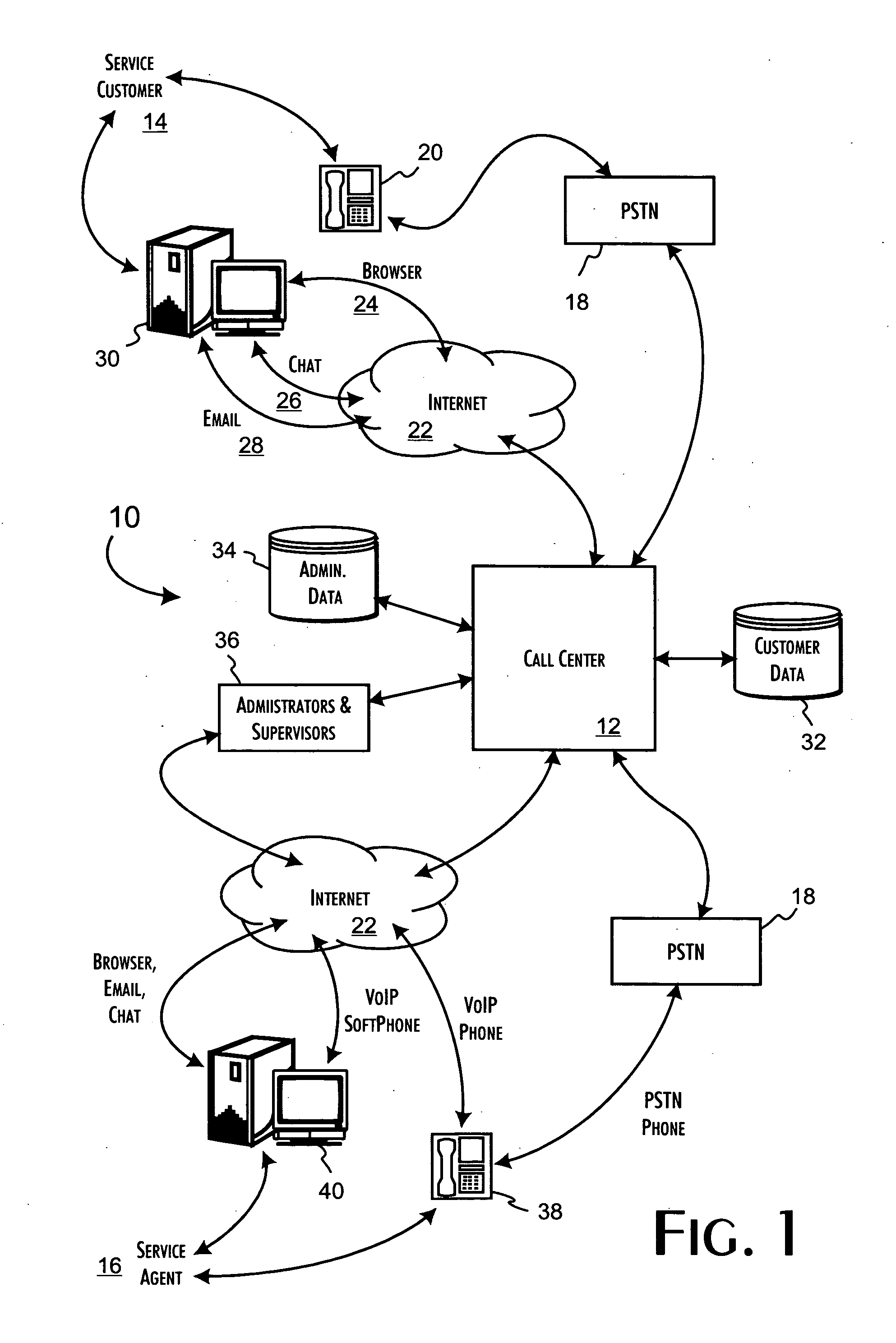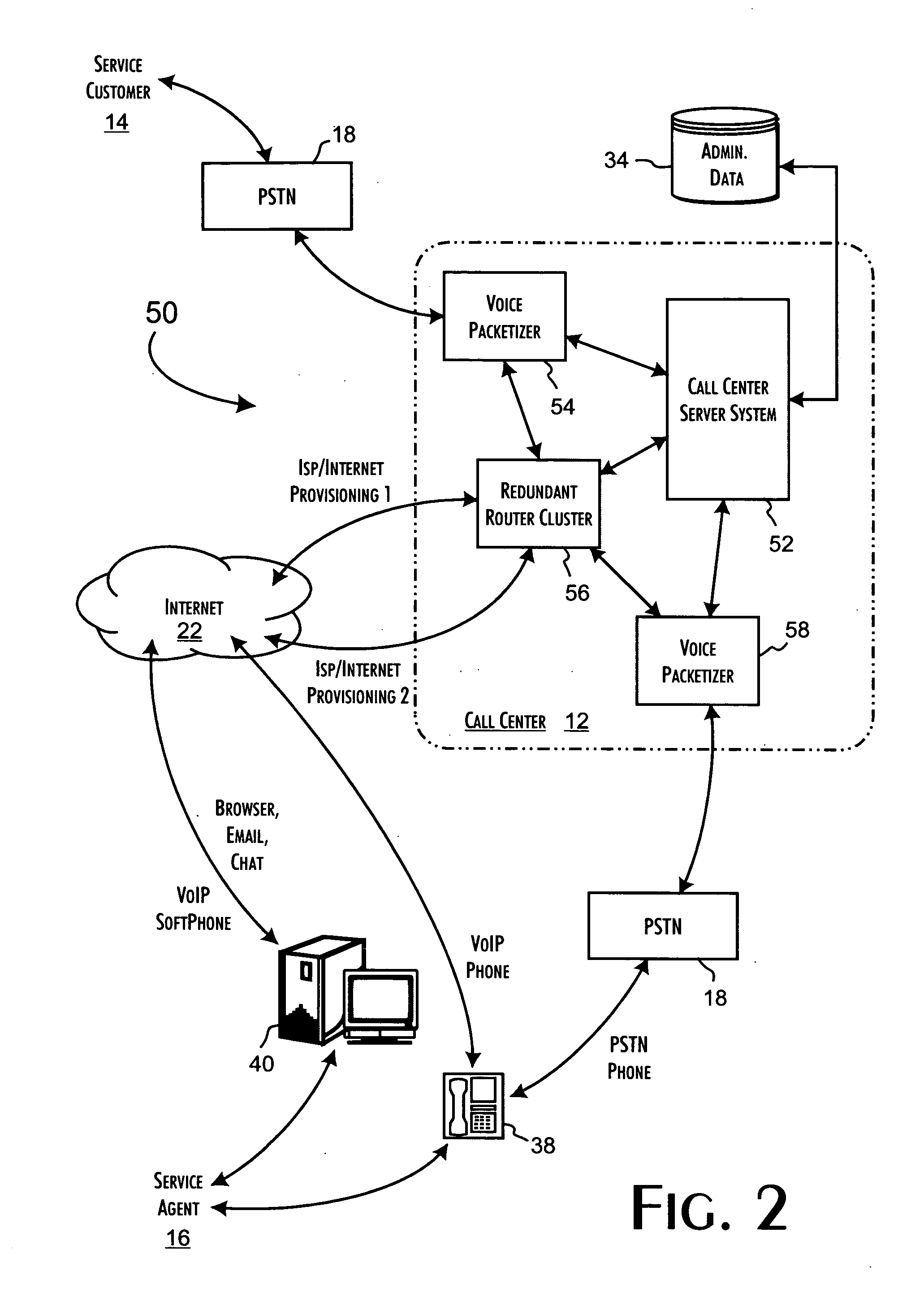Telecommunication call distribution system
a distribution system and telecommunication technology, applied in the field of telecommunications-based call centers, can solve the problems of complex procedural and technical mechanisms of conventional call centers, the cost of telecommunications charges to connect between call centers and agents, and the inability to support distributed groups of agents, etc., to achieve convenient administrative oversight, short time, and flexible
- Summary
- Abstract
- Description
- Claims
- Application Information
AI Technical Summary
Benefits of technology
Problems solved by technology
Method used
Image
Examples
Embodiment Construction
[0028] The present invention enables the efficient operation of a customer support call center in establishing and maintaining qualified and cost-effective communications connections between a service customer and service agent through the call center. As generally shown in FIG. 1, the operating architecture 10 of a call center 12, constructed in accordance with the present invention, hosts service transactions between any number of service customers 14 and any number of concurrently available service agents 16. As detailed in copending U.S. application Ser. No. 09 / 981,550, entitled Method of and Apparatus for Allowing Customer-Agents to Perform Every Phone, Chat, Email and Web Callback Transaction in a Single Screen, which is assigned to the Assignee of the present application, and which is hereby expressly incorporated by reference, the call center 12 implements a call center server system that executes control applications to receive service customer calls, manage individual call...
PUM
 Login to View More
Login to View More Abstract
Description
Claims
Application Information
 Login to View More
Login to View More - R&D
- Intellectual Property
- Life Sciences
- Materials
- Tech Scout
- Unparalleled Data Quality
- Higher Quality Content
- 60% Fewer Hallucinations
Browse by: Latest US Patents, China's latest patents, Technical Efficacy Thesaurus, Application Domain, Technology Topic, Popular Technical Reports.
© 2025 PatSnap. All rights reserved.Legal|Privacy policy|Modern Slavery Act Transparency Statement|Sitemap|About US| Contact US: help@patsnap.com



